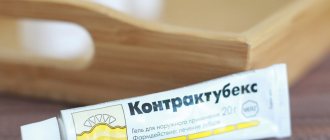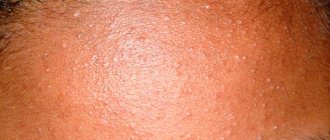Home | About us | Delivery | Advertisers | Login | Registration
The pharmacy is closed on Sundays and holidays.
- Medicines
- dietary supplementsVitamins
- Categories from A to Z
- Brands from A to Z
- Products from A to Z
- Medical equipment
- beauty
- Child
- Care
- Honey products appointments
- Herbs and herbal teas
- Medical nutrition
- Journey
- Making medicinesStock
Pharmacy online is the best pharmacy in Almaty, delivering medicines to Almaty. An online pharmacy or online pharmacy provides the following types of services: delivery of medicines, medicines to your home. Online pharmacy Almaty or online pharmacy Almaty delivers medicines to your home, as well as home delivery of medicines in Almaty.
my basket
Apteka84.kz is an online pharmacy that offers its customers medicines, medicinal and decorative cosmetics, dietary supplements, vitamins, baby food, intimate products for adults, medical equipment and thousands of other medical and cosmetic products at low prices. All data presented on the Apteka84.kz website is for informational purposes only and is not a substitute for professional medical care. Apteka84.kz strongly recommends that you carefully read the instructions for use contained in each package of medicines and other products. If you currently have any symptoms of the disease, you should seek help from a doctor. You should always tell your doctor or pharmacist about all the medicines you take. If you feel you need further help, please consult your local pharmacist or contact our GP online or by telephone.
© 2021 Pharmacy 84.
Diclogen gel for external use 1% 50g
Compound
Gel for external use.
Pharmacokinetics
The active component of the drug diclofenac is a nonsteroidal anti-inflammatory drug (NSAID) with pronounced analgesic (painkiller) and anti-inflammatory properties. Indiscriminately inhibiting cyclooxygenase types 1 and 2, it disrupts the metabolism of arachidonic acid and the synthesis of prostaglandins, which are the main link in the development of inflammation.
Diclogen is used to relieve pain and reduce swelling associated with the inflammatory process. When applied topically, it causes a weakening or disappearance of joint pain at rest and during movement. Reduces morning stiffness and swelling of joints, helps increase range of motion.
Indications for use
When applied, systemic absorption is no more than 6%. Protein binding - 99.7%. Excreted by the kidneys.
Contraindications
— Post-traumatic inflammation of soft tissues and joints, for example due to sprains, strains and bruises.
— Rheumatic diseases of soft tissues (tenosynovitis, bursitis, damage to periarticular tissues),
— Pain and swelling associated with diseases of the muscles and joints (rheumatoid arthritis, osteoarthritis, radiculitis, lumbago, sciatica, muscle pain of rheumatic and non-rheumatic origin).
Directions for use and doses
The drug may enhance the effect of drugs that cause photosensitivity. Clinically significant interactions with other drugs have not been described.
Storage conditions
Over the counter
Best before date
Store in a dry place, protected from light, at a temperature not exceeding 25C. Do not freeze.
Keep out of the reach of children.
Description
1 g of gel contains:
Active substance:
Diclofenac diethylamine……11.6 mg
equivalent to the content of Diclofenac sodium……… 10 mg
Auxiliary vegetables:
Chlorocresol, liquid paraffin, carbomer 940, disodium edetate, propylene glycol, isopropanol, benzyl alcohol, sodium sulfite, polysorbate 80, lavender oil, trolamine, purified water.
Conditions for dispensing from pharmacies
30 g or 50 g of gel in an aluminum or aluminum laminated tube. 1 tube with instructions for use in a cardboard box.
Dosage form
Diclofenac
Pharmacodynamics
Almost white translucent gel with a specific odor.
Side effects
The drug should not be used in the third trimester of pregnancy. There is no experience with the use of the drug during lactation. Use in the first and second trimesters is possible only after consultation with a doctor.
Use during pregnancy and breastfeeding
Hypersensitivity to diclofenac or other components of the drug, acetylsalicylic acid or other NSAIDs, anamnestic data on an attack of bronchial obstruction, rhinitis, urticaria after taking acetylsalicylic acid or other NSAIDs, pregnancy (III trimester), lactation period, children's age (up to 6 years), violation integrity of the skin.
Interaction
Local reactions: eczema, photosensitivity, contact dermatitis (itching, redness, swelling of the treated skin area, papules, vesicles, peeling).
Systemic reactions: generalized skin rash, allergic reactions (urticaria, angioedema, bronchospastic reactions), photosensitivity.
Overdose
— Post-traumatic inflammation of soft tissues and joints, for example due to sprains, strains and bruises.
— Rheumatic diseases of soft tissues (tenosynovitis, bursitis, damage to periarticular tissues),
— Pain and swelling associated with diseases of the muscles and joints (rheumatoid arthritis, osteoarthritis, radiculitis, lumbago, sciatica, muscle pain of rheumatic and non-rheumatic origin).
Impact on the ability to drive vehicles and operate machinery
Externally. For adults and children over 12 years of age, the drug is applied to the skin 2 times a day and lightly rubbed. The required amount of the drug depends on the size of the painful area. A single dose of the drug is up to 2 g (about 4 cm with the neck of the tube completely open). For children from 6 to 12 years old, use no more than 2 times a day, a single dose of the drug up to 1 g (about 2 cm with the neck of the tube completely open).
After applying the drug, hands must be washed.
The duration of treatment depends on the indications and therapeutic effect. After 2 weeks of using the drug, you should consult your doctor.
Diclofenac gel
Dosage form
Gel for external use
Composition per 100 g:
Active substance
: diclofenac sodium – 1.00 g.
Excipients
: 2-propanol – 45.00 g, macrogol 7 glyceryl cocoate – 6.00 g, hypromellose 4000 – 3.00 g, Scots pine oil – 0.15 g, lavender oil – 0.05 g, purified water – up to 100 .00 g.
Description
Colorless or with a slight yellowish tint, transparent gel with a characteristic odor.
Pharmacotherapeutic group
Non-steroidal anti-inflammatory drug (NSAID).
ATX code: M02AA15.
Pharmacological properties
Pharmacodynamics
The active component diclofenac is a non-steroidal anti-inflammatory drug with pronounced analgesic, anti-inflammatory and antipyretic properties. Indiscriminately inhibiting cyclooxygenase types 1 and 2, it disrupts the metabolism of arachidonic acid.
Diclofenac is used to eliminate pain and inflammation in joints, muscles and ligaments of traumatic or rheumatic origin, helping to reduce pain and swelling associated with the inflammatory process, increasing joint mobility.
Thanks to its hydroalcoholic base, Diclofenac has a calming and cooling effect.
Pharmacokinetics
The amount of diclofenac absorbed through the skin is proportional to the area of the treated surface and depends on both the total dose of the drug applied and the degree of skin hydration. After applying Diclofenac, gel for external use 1% (4 applications per day) to a skin surface area of 400 cm2, the concentration of the active substance in the plasma corresponds to its concentration when using 2% diclofenac gel (2 applications per day). On day 7, the relative bioavailability of the drug (AUC ratio) is 4.5% (for an equivalent dose of diclofenac sodium salt). When wearing a moisture-permeable dressing, suction did not change. The concentration of diclofenac in plasma, synovial membrane and synovial fluid was measured when the drug was applied to the area of the affected joint. Maximum plasma concentrations were approximately 100 times lower than after oral administration of the same amount of diclofenac. 99.7% of diclofenac is bound to plasma proteins, mainly to albumin (99.4%).
Diclofenac is preferentially distributed and retained deep in tissues prone to inflammation, such as joints, where its concentration is 20 times higher than in plasma.
The metabolism of diclofenac is carried out partly by glucuronidation of the unchanged molecule, but mainly through single and multiple hydroxylation, which leads to the formation of several phenolic metabolites, most of which are converted to glucuronide conjugates. Two phenolic metabolites are biologically active, but to a much lesser extent than diclofenac.
The total systemic plasma clearance of diclofenac is 263±56 ml/min. The terminal half-life is 1-2 hours. The half-life of metabolites, including two pharmacologically active ones, is also short and amounts to 1-3 hours. One of the metabolites (3′-hydroxy-4′-methoxydiclofenac) has a longer half-life, however, this the metabolite is completely inactive. Most of diclofenac and its metabolites are excreted in the urine.
Indications for use
• Back pain due to inflammatory and degenerative diseases of the spine (sciatica, osteoarthritis, lumbago, sciatica),
• Pain in the joints (joints of the fingers, knees, etc.) with osteoarthritis,
• Muscle pain (due to sprains, strains, bruises, injuries),
• Inflammation and swelling of soft tissues and joints due to injuries and rheumatic diseases (tenosynovitis, bursitis, lesions of periarticular tissues, wrist syndrome).
Contraindications
Hypersensitivity to diclofenac or other components of the drug; tendency to develop attacks of bronchial asthma, skin rashes or acute rhinitis when using acetylsalicylic acid or other NSAIDs; pregnancy (III trimester), breastfeeding; children's age (up to 12 years); violation of the integrity of the skin at the intended site of application.
Carefully
Hepatic porphyria (exacerbation), erosive and ulcerative lesions of the gastrointestinal tract, severe dysfunction of the liver and kidneys, blood clotting disorders (including hemophilia, prolonged bleeding time, bleeding tendency), chronic heart failure, bronchial asthma, old age, pregnancy (I and II trimester).
Use during pregnancy and breastfeeding
Due to the lack of data on the use of Diclofenac in pregnant women, the use of the drug during the first and second trimesters of pregnancy is recommended only as prescribed by a doctor, weighing the benefits for the mother and the risk for the fetus.
The drug is contraindicated in the third trimester of pregnancy due to the possibility of decreased uterine tone, impaired fetal renal function with subsequent development of oligohydramnios and/or premature closure of the fetal ductus arteriosus.
Due to the lack of data on the penetration of Diclofenac into breast milk, the drug is not recommended for use during breastfeeding. If it is still necessary to use the drug, it should not be applied to the mammary glands or large surface areas of the skin and should not be used for a long time.
There are no data on the use of Diclofenac and its effect on fertility in humans.
Directions for use and doses
Externally.
For adults and children over 12 years of age, the drug is applied to the skin 2 times a day (every 12 hours: preferably morning and evening), lightly rubbing into the skin.
The required amount of the drug depends on the size of the painful area. A single dose of the drug - 4-8 g (which is comparable in volume to twice the size of a cherry or walnut) is enough to treat an area of 400-800 cm2. If your hands are not the area where pain is localized, then after applying the drug they should be washed. The duration of treatment depends on the indications and the observed effect. The gel should not be used for more than 14 days for post-traumatic inflammation and rheumatic diseases of soft tissues without a doctor’s recommendation. If after 7 days of use the therapeutic effect is not observed or the condition worsens, you should consult a doctor.
To remove the protective membrane, use the screw cap as a key (the recess with protrusions on the outside of the cap). Align the indentation on the outside of the cap with the shaped protective membrane of the tube and turn. The membrane should separate from the tube.
The tubes can have either a regular cap (round shape) or an innovative cap (triangular shape), which is especially convenient for use when the mobility of the hand joints is limited due to osteoarthritis or other joint diseases or injuries.
Side effect
Classification of the frequency of occurrence of adverse reactions:
very often (> 1/10); often (> 1/100, < 1/10); uncommon (> 1/1000, < 1/100); rare (> 1/10000, < 1/1000); very rare (< 1/10000), including isolated reports.
Infectious and parasitic diseases:
Very rare: pustular rash.
Immune system disorders:
Very rare: hypersensitivity reactions (including urticaria), angioedema. Respiratory, thoracic and mediastinal disorders: Very rare: asthma.
Disorders of the skin and subcutaneous tissues:
Common: dermatitis (including contact dermatitis), rash, erythema, eczema, itching.
Rarely: bullous dermatitis.
Very rare: photosensitivity reactions.
If any side effects occur, including those not indicated in the instructions, you must stop using the drug and consult a doctor.
Overdose
Due to the low systemic absorption when applying the gel, overdose is unlikely.
In case of accidental ingestion, systemic adverse reactions may develop. Treatment of overdose due to accidental ingestion: gastric lavage, induction of vomiting, activated charcoal, symptomatic therapy. Dialysis and forced diuresis are not effective due to the high degree of binding of diclofenac to plasma proteins (about 99%).
Interaction with other drugs
The drug may enhance the effect of drugs that cause photosensitivity. Clinically significant interactions with other drugs have not been described.
special instructions
Diclofenac should be applied only to intact skin, avoiding contact with open wounds. The drug should not come into contact with the mouth, eyes or mucous membranes. After applying the drug, a bandage may be applied, but airtight occlusive dressings should not be applied. If a skin rash develops after application of the drug, its use should be discontinued.
The effect of the drug on the ability to drive vehicles and machinery
Does not affect.
Release form
Gel for external use 1%.
5, 10, 15, 20, 25, 30, 35, 40, 50, 60, 70, 80, 90, 100 g in orange glass jars with a triangular rim and a lid that is tensioned with a sealing element.
5, 10, 15, 20, 25, 30, 35, 40, 50, 60, 70, 80, 90, 100 g in polymer jars complete with lids or in polyethylene terephthalate jars with closures.
20, 25, 30, 35, 40, 50, 60, 70, 80, 100 g in aluminum tubes, coated with BF-2 varnish, with caps made of high-density polyethylene or in polymer tubes with polyethylene screw caps.
Each jar and tube, along with instructions for use, is placed in a cardboard pack.
Storage conditions
At a temperature not higher than 25 °C.
Keep out of the reach of children.
Best before date
3 years.
Do not use after the expiration date stated on the packaging.
Vacation conditions
Available without a prescription.





